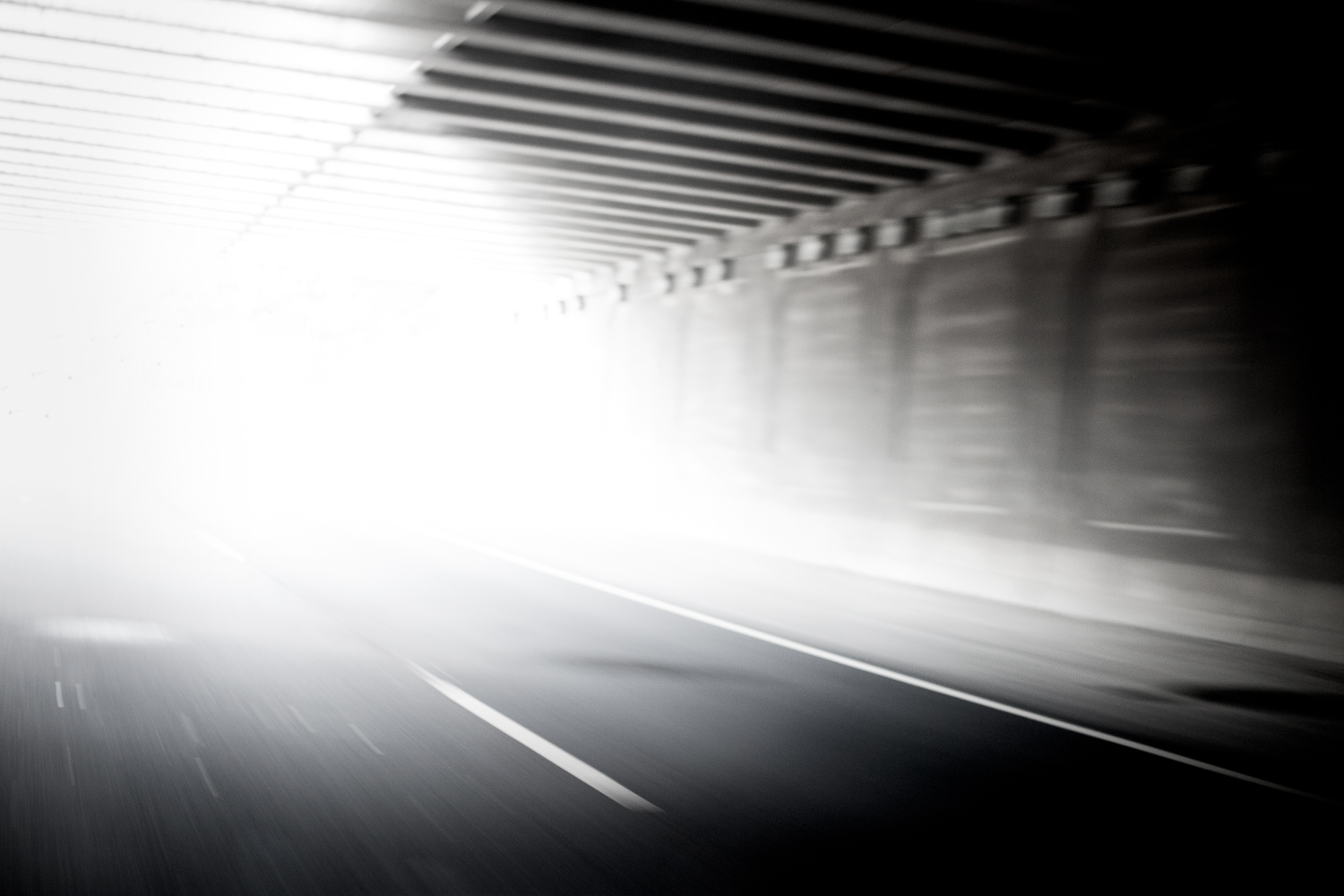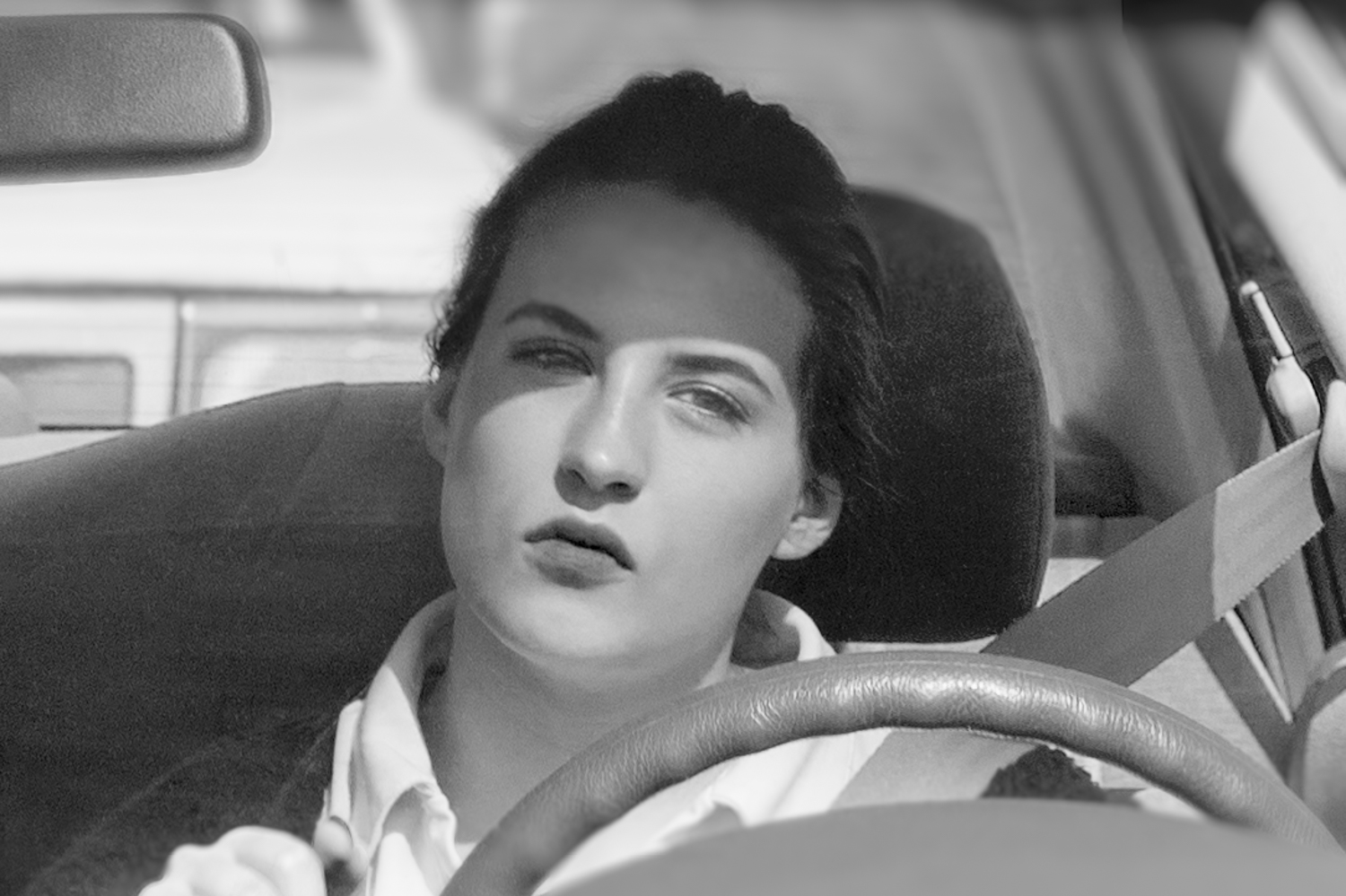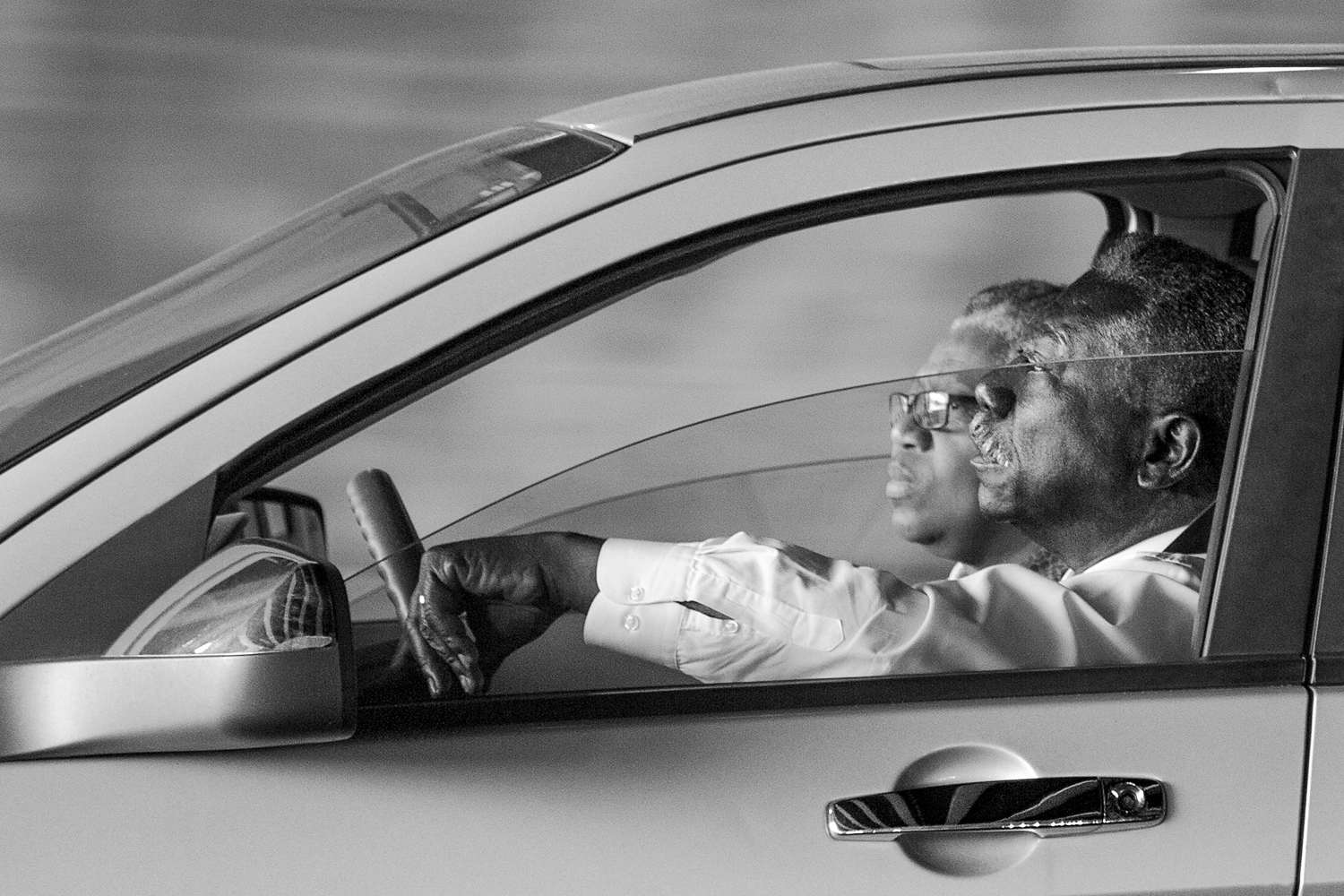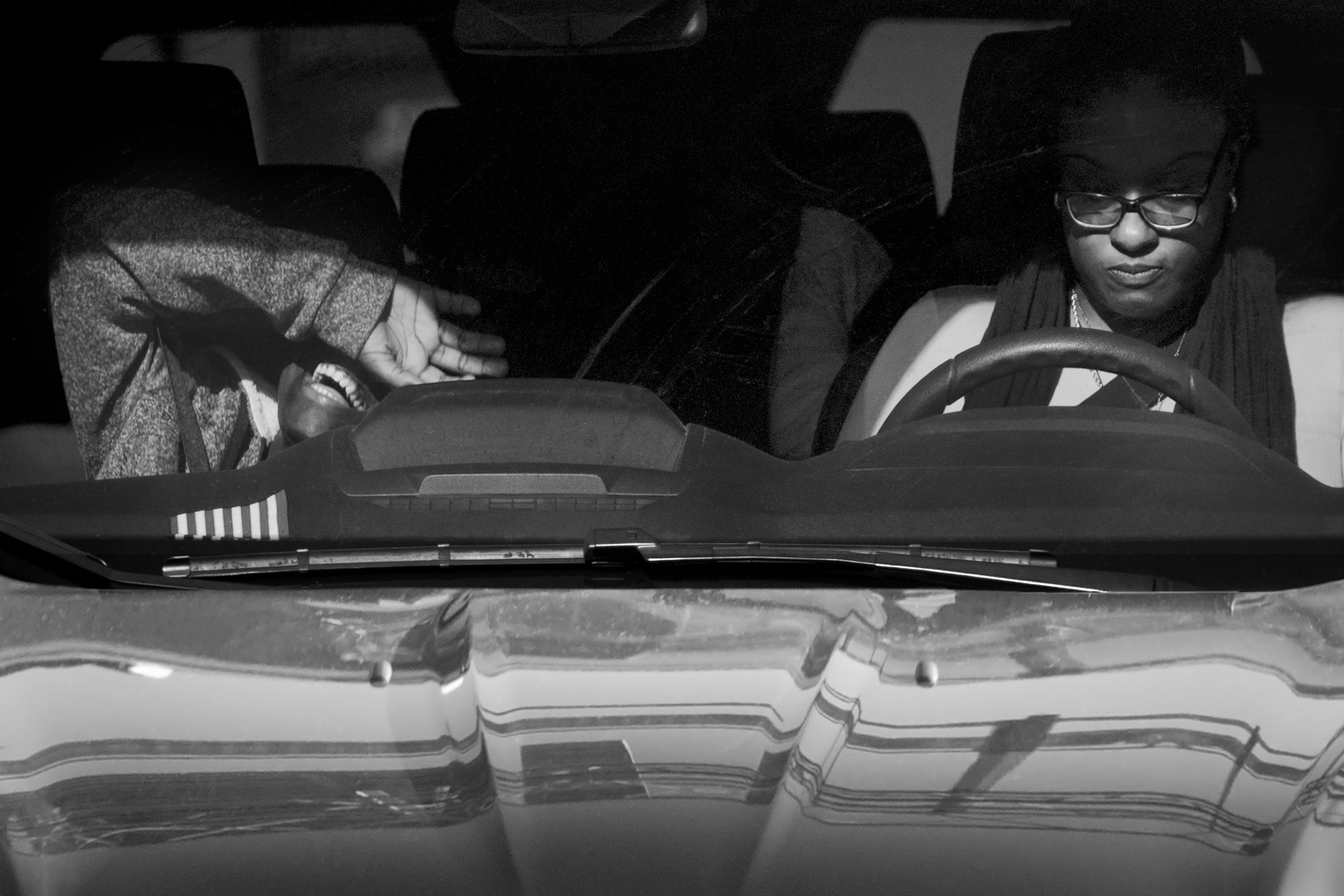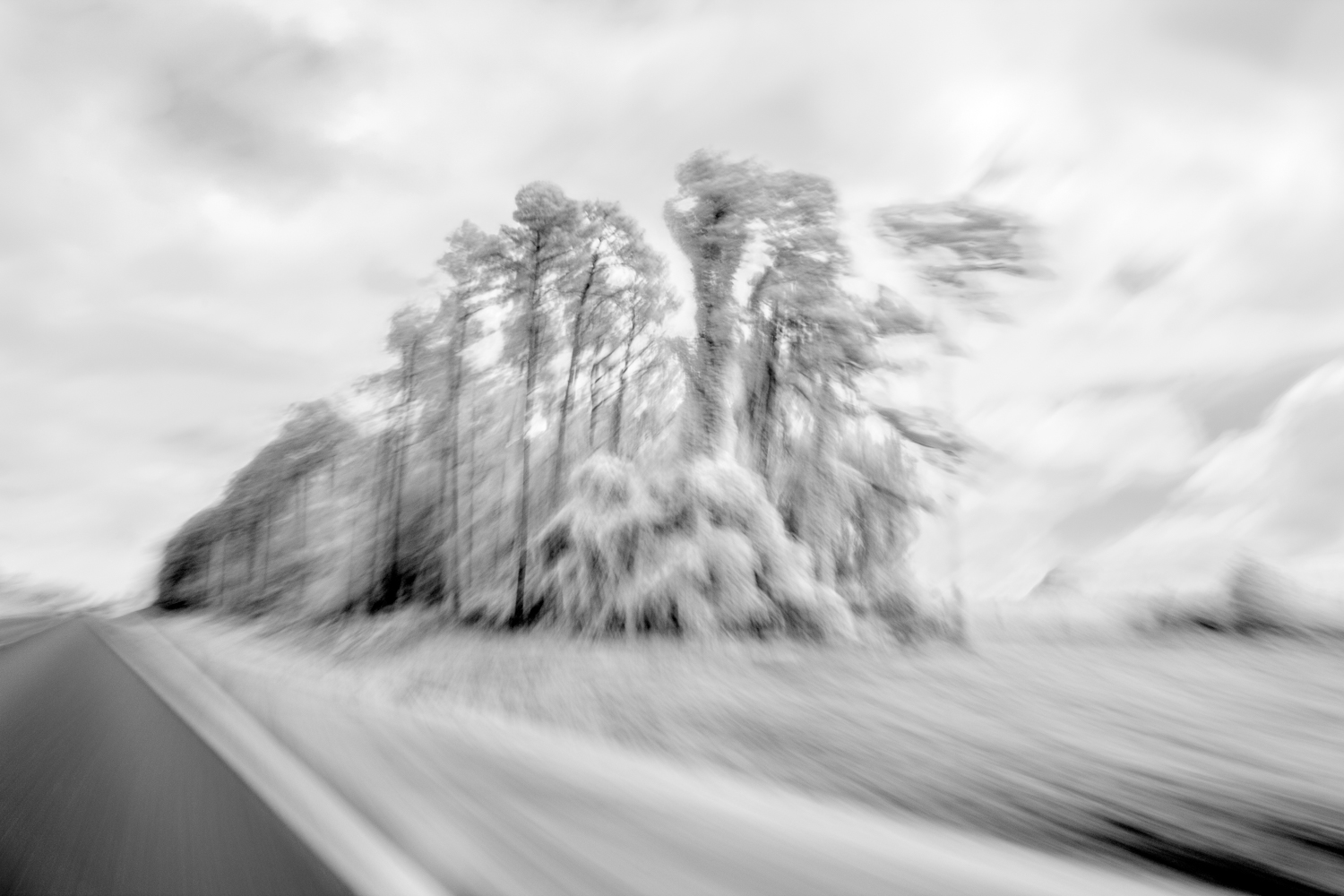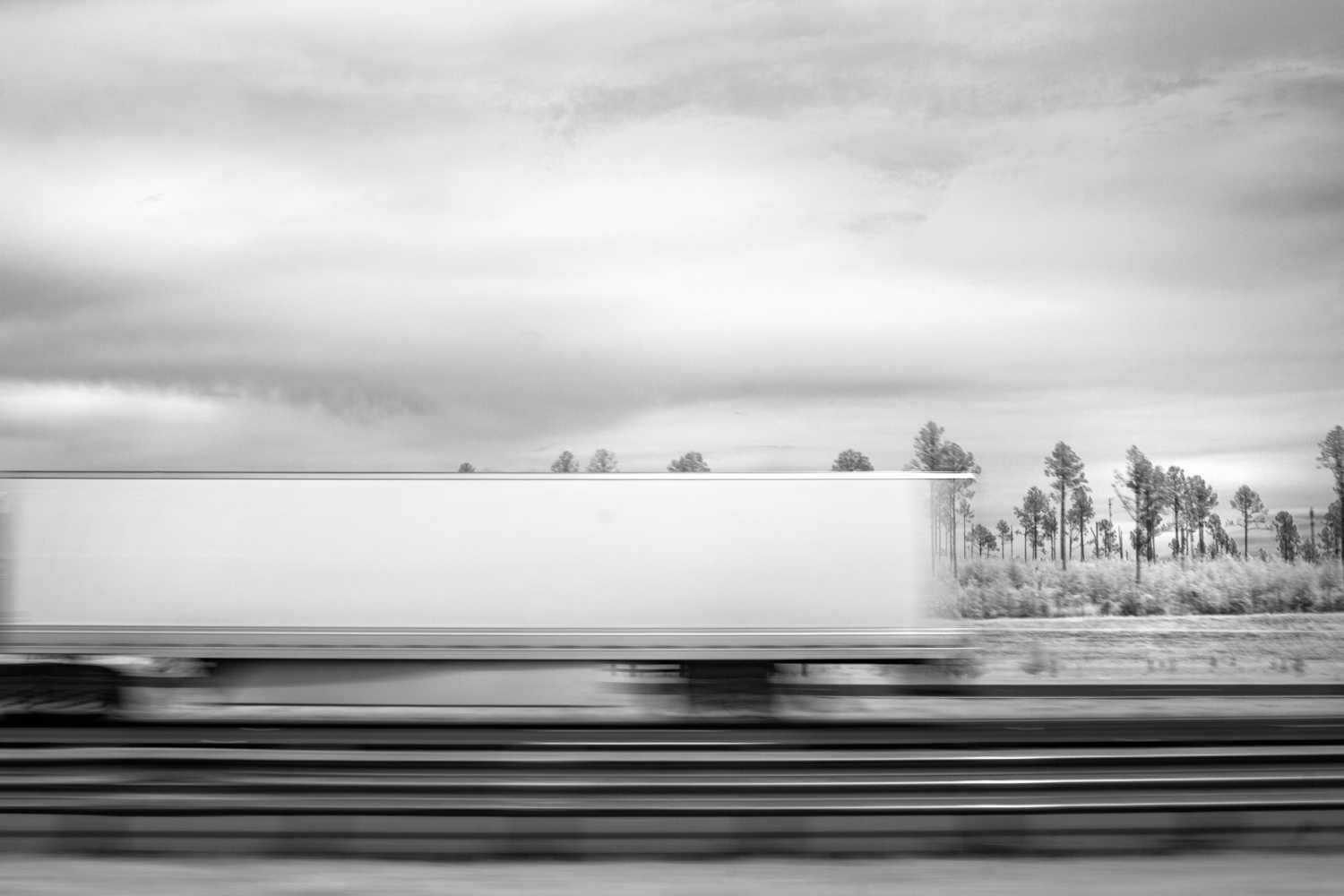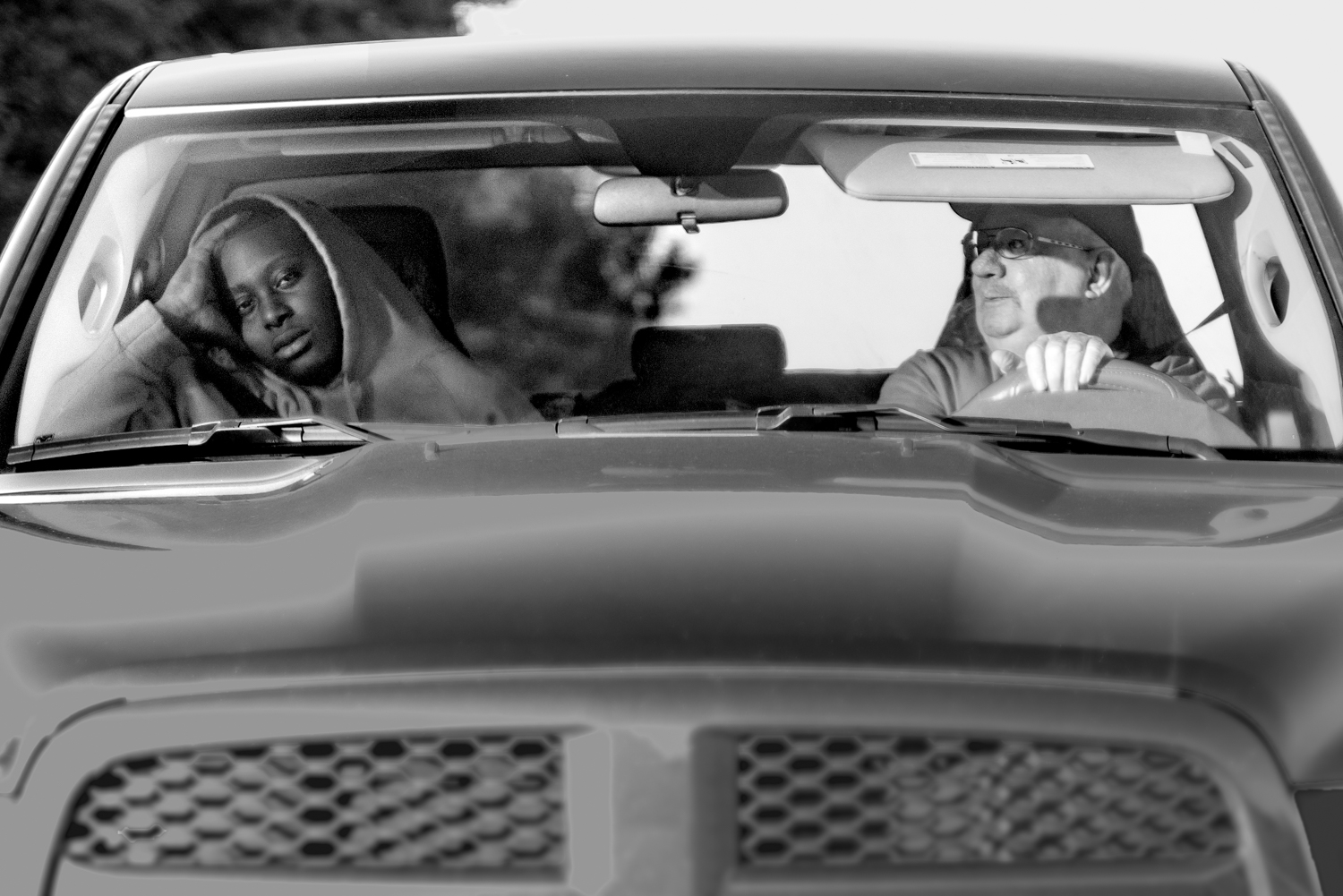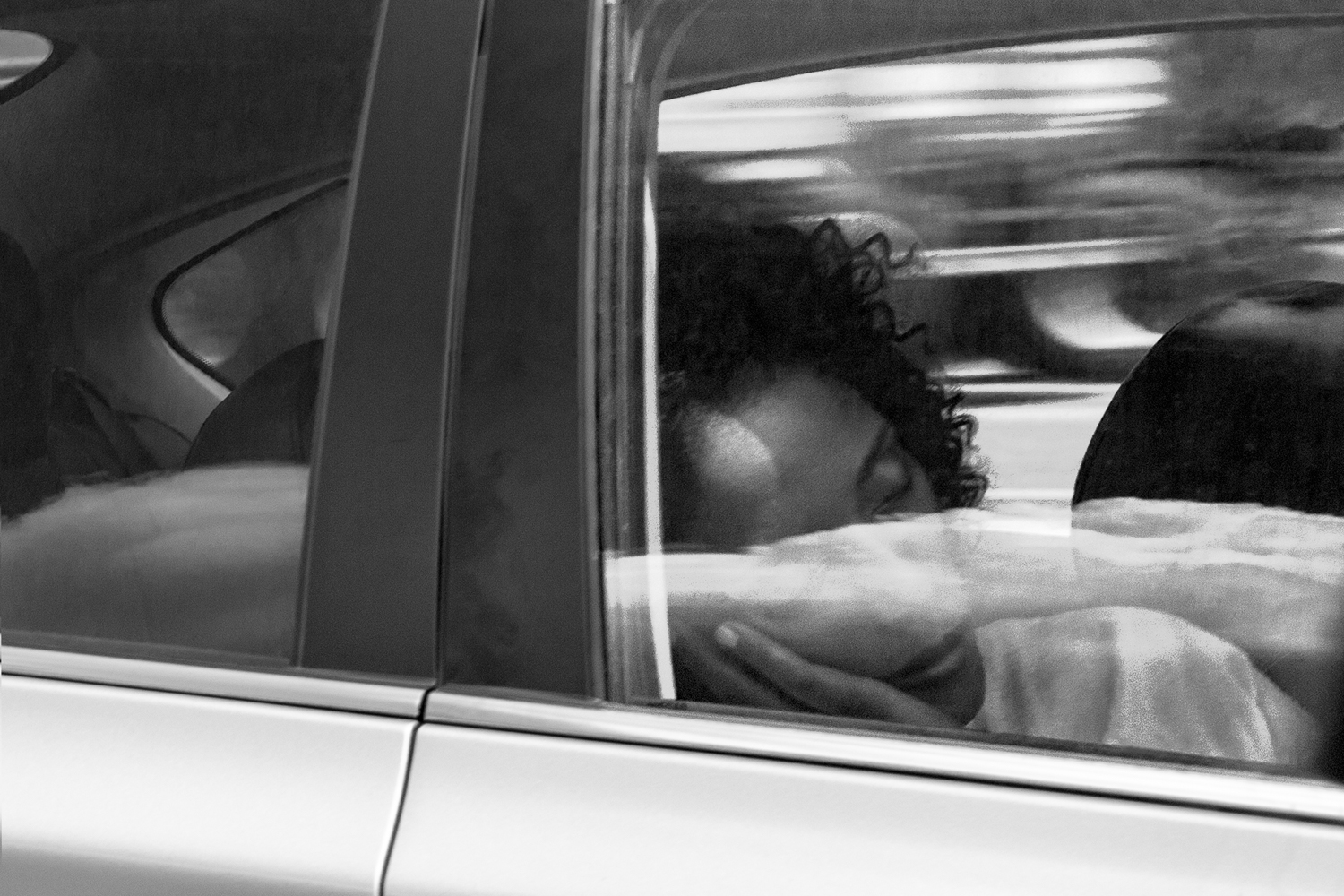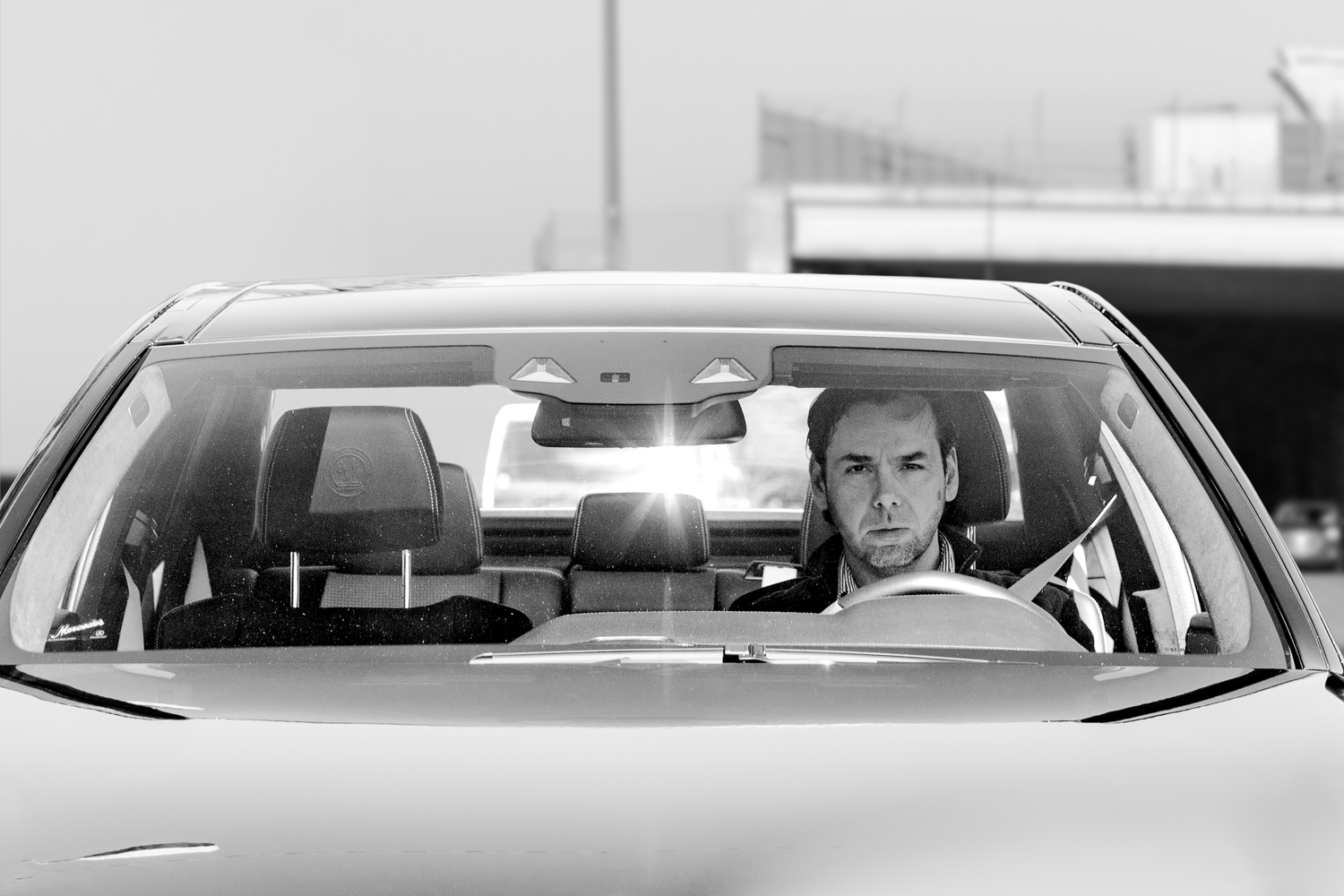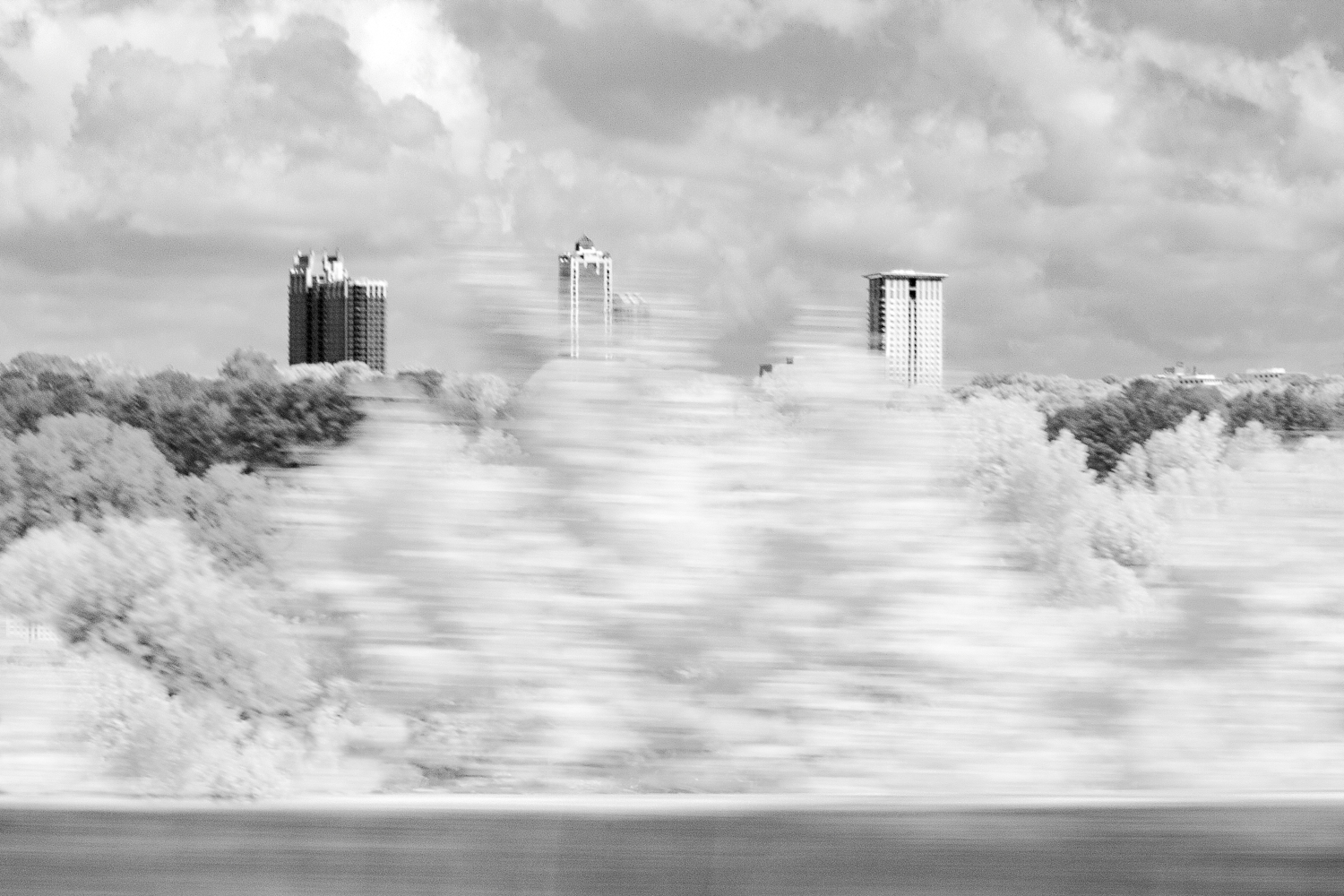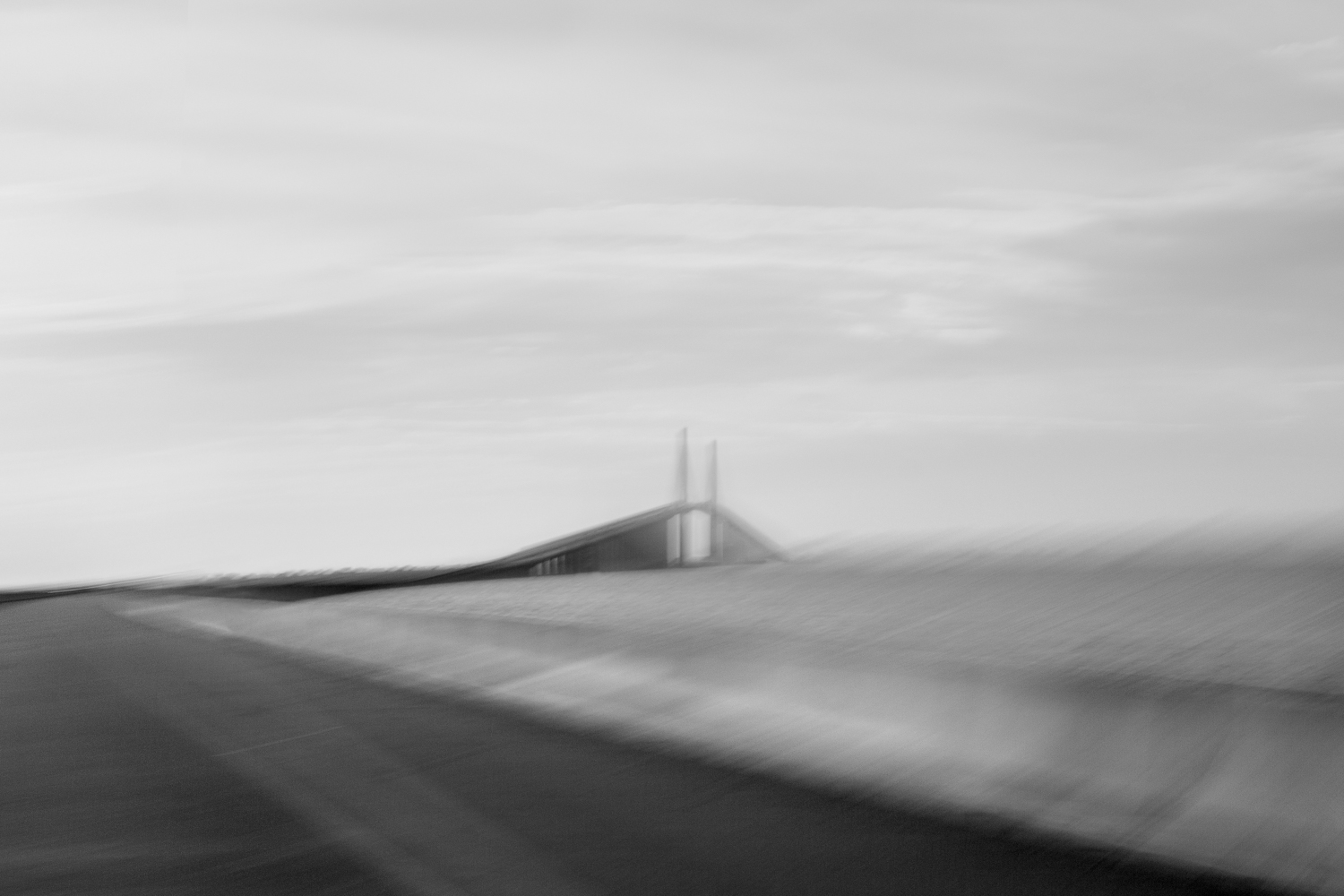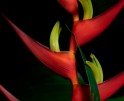Review Santa Fe: Beth Lilly: The Seventh Bardo
Today, we are continuing to look at the work of artists with whom I met at Review Santa Fe in November 2023. Up next, we have The Seventh Bardo by Beth Lilly.
Beth Lilly is a photographic artist whose work explores the formation of personal and cultural identities and the role choice, chance and circumstance play in that ongoing evolution. Lilly earned an MFA in Photography from Georgia State University and an A.B.J. in Telecommunication Arts from the University of Georgia. Her work resides in the permanent collections of the High Museum, the New Mexico Museum of Art, The Ogden Museum of Southern Art, MOCA GA, the Zuckerman Museum and many other institutional and private collections. Her critically acclaimed performance/interactive project “The Oracle @ WiFi” was published by Kehrer Verlag and other projects have been featured in monographs ‘Noplaceness: Art in a Post-Urban Landscape’ and ‘Earth Now: American Landscape Photographers and the Environment’. Her work has been reproduced and reviewed in such publications as Blind Magazine, F-Stop Magazine, Lensculture, Art Papers, Papermag, Burnaway, The Bitter Southerner, Atlanta Magazine and ArtsATL. Select exhibitions include New Mexico Museum of Art, The High Museum of Art, Spalding Nix Fine Art, the SE Center for Photography, Whitespace Gallery, the Atlanta Contemporary Art Center, and the Center for Fine Art Photography. In addition to her personal work, she teaches, curates, and serves on the Board of the Atlanta Photography Group.
Follow Beth on Instagram: @sbethlilly
The Seventh Bardo
Interstates. Not innately interesting. No one looks at an exit ramp and thinks, ’wow, that’s gorgeous!’ The word brings up images of endless concrete, featureless structures, and bland landscapes. But I find the interstate to be a fascinating liminal space, unique to contemporary America. The sealed environment of our cars, the high speed of travel, and the limited access of the interstate itself, all serve to separate us from our fellow travelers, the landscape we traverse, and the obligations of our busy lives. I feel I step outside the confines of time and space and can let go of demands on my attention and just be; with the thrill of speed and my forward momentum, with the illusion of freedom from responsibilities, or with an internal journey of contemplation and reflection.
“The Seventh Bardo” was shot entirely while driving on the interstates of the Southeast. I grew up in the Southeastern cities of Charlotte, North Carolina and Atlanta, Georgia during the 70’s, a time when the new interstate system was a major agent in the transformations going on in that region. As a young woman, the interstate symbolized freedom from isolation and was a doorway to exciting new experiences. As an adult, I often turned to the interstate in times of uncertainty, seeking the kind of introspection that I could only find on a long drive through its empty landscapes. ‘Bardo’ is a Tibetan term, meaning ‘an in-between space’, and usually refers the state of existence between death and rebirth. I am proposing that driving on the interstate is a kind of bardo. It’s in between the place we’ve left and our final destination, with hours and miles to traverse in-between.
A meditation on the modern journey, the landscapes comprising The Seventh Bardo re-envision the view outside the window as a no-man’s land, far removed from the ordinary routines of daily life. While the landscapes are shot handheld, the portraits are taken by cameras mounted on tripods and using a remote cable. From the tens of thousands of images shot, I select photographs of people who appear to be lost in thought and recontextualize them as the denizens of a transcendent limbo. In exhibition, the landscapes are printed large, reflecting the monumentality of the interstate structures and vast spaces. The portraits are a more intimate size, scattered between the landscapes in small groups, mimicking encounters on the highway.
Daniel George: What prompted you to begin photographing on interstates—leading the creation of The Seventh Bardo project?
Beth Lilly: The short answer is…I have no idea. I have no memory whatsoever of that initial urge, ‘Hey! I know, I’ll take a photo while driving!!’ My first interstate image is from 2014, a time period when I was processing a recent divorce by driving solo for long distances on the interstate. For most of my adult life, I have worked through difficult life changes by escaping into the pure joy of driving. Problems seem to shrink when surrounded by wide open horizons and white fluffy clouds floating in a blue sky. Cocooned in my happy place, working through my problems feels effortless. I guess after two years of interstate therapy, I had worked through the worst of the divorce trauma and was getting kind of bored. At the same time, I was ending one project and didn’t have a new one in the works, so I was in that awkward stage of experimenting, waiting for something to grab me. I do recall looking at a portrait I did of a driver and my heart stopped. I was mesmerized by a young man’s intense focus on pushing forward and was so curious about his story, what he was thinking about. And so I did more. I had a lot of self-doubt because I knew portraits of people in cars is a much-derided trope, but I was feeling a difference between my concerns and other car projects I had seen. To me, my images felt more similar Philip-Lorca diCorcia’s Heads or Harry Callahan’s Women Lost in Thought. So I just had to have confidence in my gut feeling that there was something here worth exploring and to keep digging until I could gain an understanding of what I the work meant to me personally and the possibility of meaning to others.
DG: Tell us more about your views of the interstate as a liminal space. And what is it about this “in-between place” that you find so compelling?
BL: I’ve really never encountered another “space” quite like it in our culture – to me it truly is a never-never land, all the more interesting since it is hiding in plain sight. Although surrounded by people, many just inches away, interstate drivers are actually isolated, physically cut off from the world. You can only enter the interstate at designated spots and once on, you can never stop, only exit. The structure of the car itself sets you apart from the sounds and weather of the area you traverse, and for most of us, you are cut off from most communication – it’s hard (and dangerous) to check emails and texts. Interstates are also ontologically confounding. HIghways are designed with no destination – they go past places or close to places but there is no actual beginning or ending, so in a way you are nowhere. But you are on the interstate, which spans the entire country, so you are simultaneously everywhere. If you are travelling roughly 60 mph, then time and distance basically conflate – 1 minute equals 1 mile. I could go on and on BUT what makes this space particularly interesting to me is what it offers. Entering the interstate system is like stepping outside of the regular world with its demands and responsibilities. If we choose, we can take advantage of this space for introspection, the time to daydream. It’s a space where transformation is possible. That’s why I chose the word ‘Bardo’ for the title. I was looking for something that spoke to how this space differs from other liminal spaces. In Tibetan Buddhism, the Bardo is usually talked about as the space in between death and rebirth but they actually identify six states as Bardos, such as sleep and meditation. These are “places” where profound change is possible. How many times have you arrived somewhere with absolutely no memory of driving there? The minimal engagement needed to drive safely is just enough to keep the conscious mind occupied leaving the subconscious and/or unconscious free to arise. Many of us spend hours driving and if intentional about it, we can use that time for some much-needed undirected musing and rumination.
DG: I am interested in the dynamic of the landscape and portrait images, and how they generate a sort of abstracted commute—as well as an energetic practice of looking inside and outside. Could you talk more about your choice to include these types of images?
BL: You know, I never thought of it as odd to combine portraits and landscapes together in one body of work. My background is in film so I tend to approach my projects as a director. Since the project is about both the space itself and how people like me experience it, a film would naturally include both. One thing I thought about often was how the work would be experienced in an exhibition or a book. Even though these are stills, both exhibitions and books unfold over time for the viewer. The first phase of this project, from 2014-2016 mainly included portraits. I was photographing actual people, who are really on the interstate, but I pull them out of context to project my personal experience onto them. So in this sense they are actors playing a role, albeit unknowingly. But something was missing. While I included a related body of landscapes, they felt off somehow. They were in color and small and tentative. I had begun working full-time as executive director of Atlanta Photography Group so time was scant and since I had reached a dead end with the project, I put it to stew on a back burner until I figured out where it needed to go. During this time, I kept a black and white photograph of a tunnel opening (the photo titled Tunnel Vision) next to my computer for years and then it hit me. For me the heart of the project was the surreal nature of this space, how it felt like a parallel universe or another dimension. And to understand the portraits, you had to understand the space they inhabit. So Tunnel Vision was the signpost, the image that pointed the way to where I needed to take the project. Like a film, the landscapes serve to set the scene, establish the perspective of how the viewer is to interpret the series. They say, ‘this is not documentary’. I am presenting the interstate as a mysterious, otherworldly place. And the portraits are the people acting out the drama , the story I want to tell. So in an exhibition or in a book, the viewer first encounters a landscape, our opening shot. The prints are large, 40” x 60”, and the viewer steps back to take it all in – the monumentality of the structures, the vastness of the space and the fleeting nature of existence. Next, the viewer encounters a small group of portraits. These are much smaller, more intimate, and the viewer steps in to closely examine the characters. So you are right, there is something of a mental “commute” going on here. First, the landscapes are seen from the point of view of a driver or passenger – they are on the inside looking out. But then it switches, and the viewer is on the outside looking into the cars at the people.
DG: In your bio, you write that your work, in general, considers the role that choice, chance, and circumstance play in the development of personal and cultural identities. In what ways do these things manifest themselves in The Seventh Bardo?
BL: I believe identities are formed from the interplay of choice, chance, and circumstance. Much of who you are and who you become is shaped by circumstances – your genetic makeup, the circumstances of family values and dynamics, your socioeconomic class, religion, ethnicity, gender-orientation and so on. Within that realm, all of which you cannot control, there exists the one thing you can control – your choices, your reaction to the slings and arrows of outrageous fortune. Cultures are the same – they are shaped by history, geographical realities, climate etc. but also by the choices made by the individuals that form the group. These choices, en masse, shape history, movements, fashion and so on. We can pretty much all agree that the interplay of these (and the stories you tell yourself about the “truth” of these things) will for a large part determine your life. But there is a third thing, which is chance, or luck, fortune or grace – things that just happen. So our personal and cultural identities are formed when piece all of these elements together to explain our lives. Of the three, I find chance the most interesting because it is uncontrollable, unpredictable and inexplicable. It’s a great mystery. And I really enjoy incorporating chance into my creative process. Within this body of work, these three forces interact in two different ways. First, and obviously, in the initial capture of the images. I stack the deck as much as I can to achieve a technically good image and to capture the kind of images I’m looking for. But I can’t control who passes me, their moment-to-moment behavior while driving nor the details of the car interiors etc. Who I photograph is purely random but I choose which images to include in the series from the tens of thousands I shoot that support my concept of the interstate as a contemporary bardo. Similarly, with the landscapes, it’s purely by chance what the settings happen to be, the quality of light that moment, my relative speed vs. the shutter speed, how it’s framed (landscapes are shot handheld without looking). Throughout the project I photographed derelict billboards, and it took me six years to get one that is “right”! But the second way is at the heart of the ‘why’ of the project, what it is about. It is through turning inward, as in meditation or other Bardos, that we can become aware of this process. It’s like your mind has a tight grip on this fabricated identity. Mindful driving can loosen that fist and allow a broader, more supple way of looking at your identity, your perception of the world. In becoming aware of your choices, you gain the ability to disrupt deeply conditioned patterns of mind.
DG: In your statement, you mention how long drives have been a source of personal introspection, and you describe this project as a “meditation on the modern journey.” What do you feel these images tell us about ourselves—and the culture we have created that centers around cars and necessary commutes?
BL: When I think about the great travel narratives of history and mythology, my thoughts immediately turn to Joseph Campbell and “The Hero’s Journey”. Campbell described a narrative arc, common to cultures throughout time, where the protagonist embarks on a journey, leaving the ordinary to be challenged by new places, new cultures, and new ways of thinking. The hero then returns home transformed. In America, the reality of the modern journey (for most of us) has become the complete opposite of the past. Instead of going out into the world for new experiences, the most common modes of travel today, the car and the airplane, both entail withdrawing from interaction with the external world. Travelers seem to be opting for complete control of their immediate environment, choosing comfort and privacy over interaction and challenges. We want our independence – to choose where, when and how we go how we can self-soothe with distractions that disconnect us from real experiences.
The modern tendency to disconnect from the external world is reflected in the way I structure the landscapes. The subject of the landscapes are the highway formations themselves and the blur from motion can obscure the nature of the space beyond the interstate. When you can see beyond the highway itself, the scenes are empty and generic, a kind of nothingness. Separated from the need to illustrate an actual place, the interstate structures are free to become the metaphors we use to describe a journey of personal growth – bridges, a passage, the light at the end of the tunnel, distant horizons. With the portraits, I try to emphasize the isolation of the subject and keep the viewers’ attention on the cars and their passengers. While the people are in sharp(ish) focus, the backgrounds are most often blurred and soft. The contrast of the interiors is punchier and I emphasized the reflections on the car surfaces to hint towards the idea that everyone is encased in their own little bubble. I’m hoping the images create an experience of peaceful contemplation for the viewer. You see, in this modern world, I think the hero’s journey needed to evolve to be internally focused. We are overstimulated, horribly stressed and distracted from the truly important part of the journey – which is to be truly aware of those internal transformations going on inside yourself. And as an artist I’m saying here! Here is a place with the opportunity to slip out of the insanity and connect to ourselves, not disconnect from the world.
Posts on Lenscratch may not be reproduced without the permission of the Lenscratch staff and the photographer.

